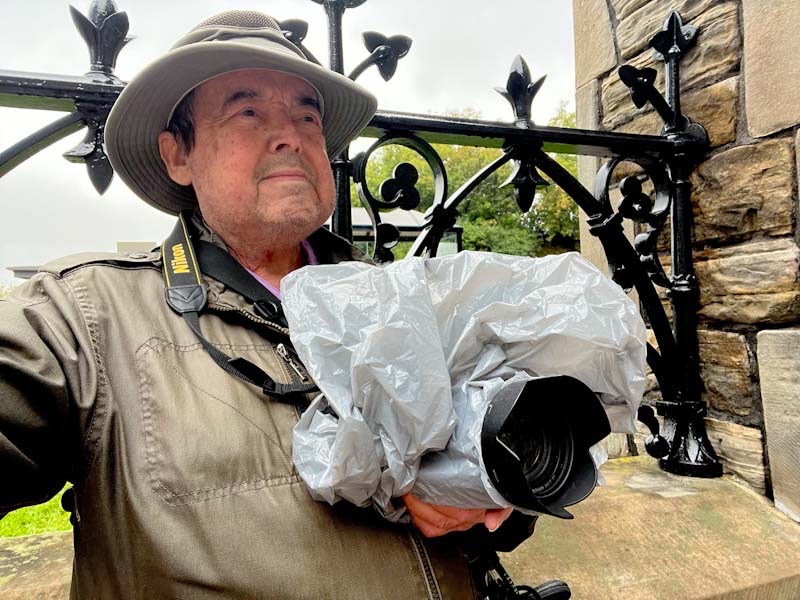
I’ve done semi-pro work, but I mostly just take pictures for my own amusement in Ottawa, Canada. I’m old now, I have no car, no money to travel, and I’m way behind the camera upgrading Joneses, so it’s probably of little interest to anyone.
I actually started taking pictures with some level of artistic intent circa 1969, with a big Polaroid Model 160 peel-apart roll film camera. By the mid-70’s, I had taught myself to develop film, and I was burning and dodging black and white prints during late night sessions in my studio apartment bathroom, on weekends when not at sea with the navy. After a while, I gravitated to Kodachrome and Ektachrome, the latter of which I developed myself. However, I had also acquired a Polaroid SX-70, and it became my favourite camera until it stopped ejecting film in the 90’s. I’ve used a little of everything over the years, from the tiny Kodak Disc of the 80s to a 4×5 large format Crown Graphic press camera, but even in my seventies now, I still particularly enjoy instant film. Sadly, most of my pre-1978 photography was lost a long time ago, except for a few fading prints without the negatives and some vintage Polaroids.
In the real world of making a living, I was an officer cadet in the Canadian Forces Regular Officer Training Plan (ROTP) while attending university. After graduating in 1974, I subsequently served my commitment in the regular Navy and then obtained a position in the federal public service, where I eventually headed a Secretary of State division embedded at National Defence Headquarters. As such, I was a member of NATO Standardization Agreement working groups, and I travelled as a civilian with Commander-level status to the old NATO HQ in Brussels, the École Militaire in Paris, the old War Office in London, among other places. I later left the government for the private sector, and I worked on defence projects such as the Canadian Patrol Frigate and the Maritime Coastal Defence Vessel programmes, and on various other aspects of naval technical and operational documentation and training films. I also did work related to Canadian Coast Guard icebreakers, Marine Atlantic ferries, and the Royal Commission on the Ocean Ranger Marine Disaster.
In the late 1980s, I joined the Primary Reserves, fully retrained as an army Logistics (Transport) officer and I was eventually Command and Staff Course qualified. Unfortunately, by that time, I had been unwisely hiding and working through symptoms of fairly advanced chronic renal failure, from a kidney disease first diagnosed in my mid-20s. It eventually became impossible to continue, and I was forced to “retire” in 1998. Prior to that, I had served in various capacities on large field exercises and command post exercises not only with reserve units but also on call-out with regular force formations such as 5 Canadian Mechanized Brigade Group and 1 Canadian Division Headquarters. I had also been the full-time planning officer (G3 Logistics and G4 Plans) for summer reserve concentrations, as well as a battalion adjudant and officer commanding a supply and transport company, brigade G4 Transport, a senior instructor on junior officer staff courses, member of a reserve officer selection board, vice-regal aide-de-camp to a provincial Lieutenant Governor, the investigating officer on sensitive inquiries involving language discrimination and sexual harassment, and occasionally a military spokesman on TV news. My last operational deployment was as the regimental liaison officer with a civilian Emergency Measures Organization HQ during Operation Recuperation, the great ice storm of 1998. Just run of the mill stuff for which I was the guy available at the time.
So technically, I’m an 11 year veteran, but not a war veteran. Not counting the decade-long break in service as a civilian at National Defence Headquarters, I had served four years in the regular navy and seven in the army reserves, some of which were on full-time service, and I was qualified to Lieutenant Colonel level. Unfortunately, I ended up spending four years on hemodialysis, until I received a kidney transplant from a young man who passed away as a result of an automobile accident. I have no idea who that was, but I’m told there was quite an effort by the transplant coordination team in getting the kidney to me.
Pierre Lachaine
